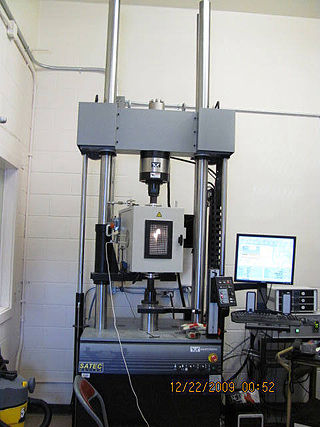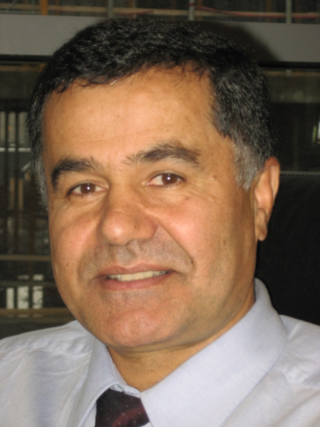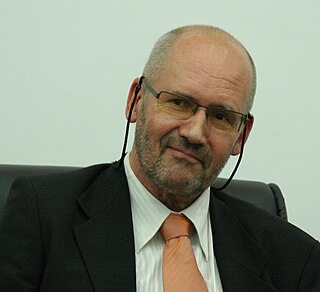
Indoor air quality (IAQ) is the air quality within and around buildings and structures. IAQ is known to affect the health, comfort, and well-being of building occupants. Poor indoor air quality has been linked to sick building syndrome, reduced productivity, and impaired learning in schools. Common pollutants of indoor air include: secondhand tobacco smoke, air pollutants from indoor combustion, radon, molds and other allergens, carbon monoxide, volatile organic compounds, legionella and other bacteria, asbestos fibers, carbon dioxide, ozone and particulates. Source control, filtration, and the use of ventilation to dilute contaminants are the primary methods for improving indoor air quality.

Environmental health is the branch of public health concerned with all aspects of the natural and built environment affecting human health. In order to effectively control factors that may affect health, the requirements that must be met in order to create a healthy environment must be determined. The major sub-disciplines of environmental health are environmental science, toxicology, environmental epidemiology, and environmental and occupational medicine.
Sick building syndrome (SBS) is a condition in which people develop symptoms of illness or become infected with chronic disease from the building in which they work or reside.

A green wall is a vertical built structure intentionally covered by vegetation. Green walls include a vertically applied growth medium such as soil, substitute substrate, or hydroculture felt; as well as an integrated hydration and fertigation delivery system. They are also referred to as living walls or vertical gardens, and widely associated with the delivery of many beneficial ecosystem services.
Volatile organic compounds (VOCs) are organic compounds that have a high vapor pressure at room temperature. High vapor pressure correlates with a low boiling point, which relates to the number of the sample's molecules in the surrounding air, a trait known as volatility.

Building science is the science and technology-driven collection of knowledge in order to provide better indoor environmental quality (IEQ), energy-efficient built environments, and occupant comfort and satisfaction. Building physics, architectural science, and applied physics are terms used for the knowledge domain that overlaps with building science. In building science, the methods used in natural and hard sciences are widely applied, which may include controlled and quasi-experiments, randomized control, physical measurements, remote sensing, and simulations. On the other hand, methods from social and soft sciences, such as case study, interviews & focus group, observational method, surveys, and experience sampling, are also widely used in building science to understand occupant satisfaction, comfort, and experiences by acquiring qualitative data. One of the recent trends in building science is a combination of the two different methods. For instance, it is widely known that occupants’ thermal sensation and comfort may vary depending on their sex, age, emotion, experiences, etc. even in the same indoor environment. Despite the advancement in data extraction and collection technology in building science, objective measurements alone can hardly represent occupants' state of mind such as comfort and preference. Therefore, researchers are trying to measure both physical contexts and understand human responses to figure out complex interrelationships.
Displacement ventilation (DV) is a room air distribution strategy where conditioned outdoor air is supplied at a low velocity from air supply diffusers located near floor level and extracted above the occupied zone, usually at ceiling height.

Tris(1,3-dichloroisopropyl)phosphate (TDCPP) is a chlorinated organophosphate. Organophosphate chemicals have a wide variety of applications and are used as flame retardants, pesticides, plasticizers, and nerve gases. TDCPP is structurally similar to several other organophosphate flame retardants, such as tris(2-chloroethyl) phosphate (TCEP) and tris(chloropropyl)phosphate (TCPP). TDCPP and these other chlorinated organophosphate flame retardants are all sometimes referred to as "chlorinated tris".
Microbiomes of the built environment is a field of inquiry into the communities of microorganisms that live in human constructed environments like houses, cars and water pipes. It is also sometimes referred to as microbiology of the built environment.
Healthy building refers to an emerging area of interest that supports the physical, psychological, and social health and well-being of people in buildings and the built environment. Buildings can be key promoters of health and well-being since most people spend a majority of their time indoors. According to the National Human Activity Pattern Survey, Americans spend "an average of 87% of their time in enclosed buildings and about 6% of their time in enclosed vehicles."
Noelle Eckley Selin is an atmospheric chemist and Associate Professor at Massachusetts Institute of Technology in the Institute for Data, Systems and Society and the Department of Earth, Atmospheric and Planetary Sciences.

Fariborz Haghighat is an Iranian-Canadian academic, engineer and Distinguished Professor of Building, Civil & Environmental Engineering at Concordia University. Haghighat has a Concordia University Research Chair in Energy and Environment and he was Inducted into the Provost's Circle of Distinction in 2009.
Jalonne White-Newsome is a program officer and lecturer. She is an advocate for environmental justice.
Catherine Jane Noakes is a British mechanical engineer who is Professor of Environmental Engineering for Buildings at the University of Leeds. Noakes specialises in airborne infections and the transport of airborne pathogens. During the COVID-19 pandemic, Noakes served on the Government of the United Kingdom Scientific Advisory Group for Emergencies (SAGE).
The International Society of Exposure Science (ISES), is a non-profit organization established in 1990 by a group of scientists and engineers, including Paul Lioy. The formation of this society was at least partially in response to a National Research Committee (NRC) on Exposure Assessment that held a series of meetings and workshops beginning in 1987 that formed the foundation of exposure science and defined basic principles. The expertise of members in ISES is interdisciplinary and draws upon a broad array of disciplines, including: exposure assessment; biochemistry; risk assessment; bioinformatics; physiology; toxicology; epidemiology; ecology; environmental chemistry; and environmental engineering. The Society’s membership is professionally diverse and includes academic, governmental, and private sector scientists, as well as policy makers who have a common interest in exposure science. ISES has operated with a President, President-elect, Treasurer, and Secretary as well as Councilors. Councilors are elected from the membership and are allocated from the various professional categories that represent Society membership. The first set of Bylaws was approved by the membership in 1991.

Brian Branfireun is a Canadian environmental scientist. He held a Canada Research Chair (2010-2020) and is a professor at Western University. He studied climate change and directed a laboratory in Western's Biotron for the study of speciated trace metals in the environment such as mercury and arsenic.
Lidia Morawska is a Polish–Australian physicist and distinguished professor at the School of Earth and Atmospheric Sciences, at the Queensland University of Technology and director of the International Laboratory for Air Quality and Health (ILAQH) at QUT. She is also co-director of the Australia-China Centre for Air Quality Science and Management, an adjunct professor at the Jinan University in China, and a Vice-Chancellor fellow at the Global Centre for Clean Air Research (GCARE), University of Surrey in the United Kingdom. Her work focuses on fundamental and applied research in the interdisciplinary field of air quality and its impact on human health, with a specific focus on atmospheric fine, ultrafine and nanoparticles. Since 2003, she expanded her interests to include also particles from human respiration activities and airborne infection transmission.

Dusan Licina is an engineer and researcher specializing in indoor air quality, building ventilation, and human exposure. He is a professor at EPFL and head of the Human-Oriented Built Environment Laboratory.
Martin Lloyd Williams was a Welsh chemist and environmental scientist who made important contributions to the science of air pollution and its incorporation into public policy in the United Kingdom. Williams was one of the first scientists to recognize the harmful health effects of ground-level ozone, in papers published in Nature in the mid-1970s, and one of the first to study vehicle emissions in the real world. He also established the first systematic programme to produce inventories of UK national air pollution emissions.

Jan Sundell was a Swedish Professor in Building Science, affiliated with Technical University of Denmark, University of Texas at Tyler, USA, Tsinghua- and Tianjin Universities in China.









